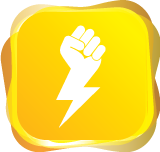 |
CCHU9071 Arts and Humanities
|
Course Description
Today, men are facing what many consider a crisis. Male students are outnumbered by females at most universities in the developed world. More young men are being out-earned by their wives. Some men demand more rights in education and parenting, and argue that feminism has victimized men. Meanwhile, popular culture continues to define men as hyper-masculine, violent and homophobic. These phenomena raise the same questions: Where do men stand today? What is the future of men?
Man Up explores from various perspectives how men have confronted, deflected or negotiated the challenges facing them. We look at why, across different times and spaces, some masculine traits are celebrated and some are demonized. Why are single and affluent men, for example, named ‘the golden bachelors’? Why are men more likely to be depicted as criminals than women?
Man Up shows how the definition of masculinity today is a result of physiological, social and economic influences. It seeks to explore complex debates around such issues as male sexuality, family relations and nation-building. Through investigating different views of masculinity through history and other disciplines, students will reflect upon and challenge existing rhetorics, tropes and opinions.

Course Learning Outcomes
On completing the course, students will be able to:
-
- Analyze the historical role of different stakeholders in sustaining and challenging men’s leading position in gender relations.
- Explain the political, social and cultural issues that shaped the masculinity ideals across time, space and culture.
- Examine how men conformed and resisted to the changing masculinity ideals at different historical points.
- Reflect upon and critically consider the value of men’s studies as a growing field in humanities.
Offer Semester and Day of Teaching
First semester (Wed)
Study Load
| Activities | Number of hours |
| Lectures | 24 |
| Tutorials | 8 |
| Reading / Self-study | 38 |
| Assessment: Writing assignments | 30 |
| Assessment: Group project and presentation (incl preparation) | 20 |
| Total: | 120 |
Assessment: 100% coursework
| Assessment Tasks | Weighting |
| Tutorial presentations and debates | 40 |
| In-class assessments | 20 |
| Video essay | 40 |
Required Reading
Selections from:
- Bailey, B. L. (1988). From front porch to back seat: Courtship in twentieth-century America. Baltimore: Johns Hopkins University Press.
- Connell, R. W. (1995). Masculinities. Berkeley: University of California Press.
- Jung, S. (2010). Korean masculinities and transcultural consumption: Yonsama, Rain, Oldboy, K-pop idols. Hong Kong: Hong Kong University Press.
- Kam, L., & Low, M. (Eds.). (2003). Asian masculinities: The meaning and practice of manhood in China and Japan. London; New York: RoutledgeCurzon.
- Kimmel, M. (2012). Manhood in America: A cultural history (3rd ed.). New York: Oxford University Press.
- Podnieks, E. (2016). Pops in pop culture: Fatherhood, masculinity, and the new man. New York: Palgrave MacMillan.
- Tosh, J. (2004). Hegemonic masculinity and gender history. In S. Dudink, K. Hagemann & J. Tosh (Eds.), Masculinities in politics and war: Gendering modern history, pp. 41–58. Manchester; New York: Manchester University Press.
- Tosh, J. (2011). The history of masculinity: An outdated concept?. In J. H. Arnold & S. Brady (Eds.), What is Masculinity: Historical dynamics from antiquity to the contemporary world, pp. 17–34. Houndmills, Basingstoke, Hampshire; New York: Palgrave Macmillan.
Course Co-ordinator and Teacher(s)
| Course Co-ordinator | Contact |
| Dr C.L. Tsang School of Humanities (History), Faculty of Arts |
Tel: 3917 2864 Email: cctsang1@hku.hk |
| Teacher(s) | Contact |
| Dr C.L. Tsang School of Humanities (History), Faculty of Arts |
Tel: 3917 2864 Email: cctsang1@hku.hk |

